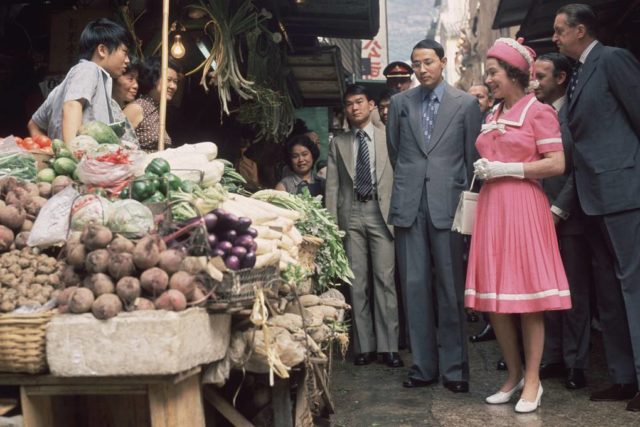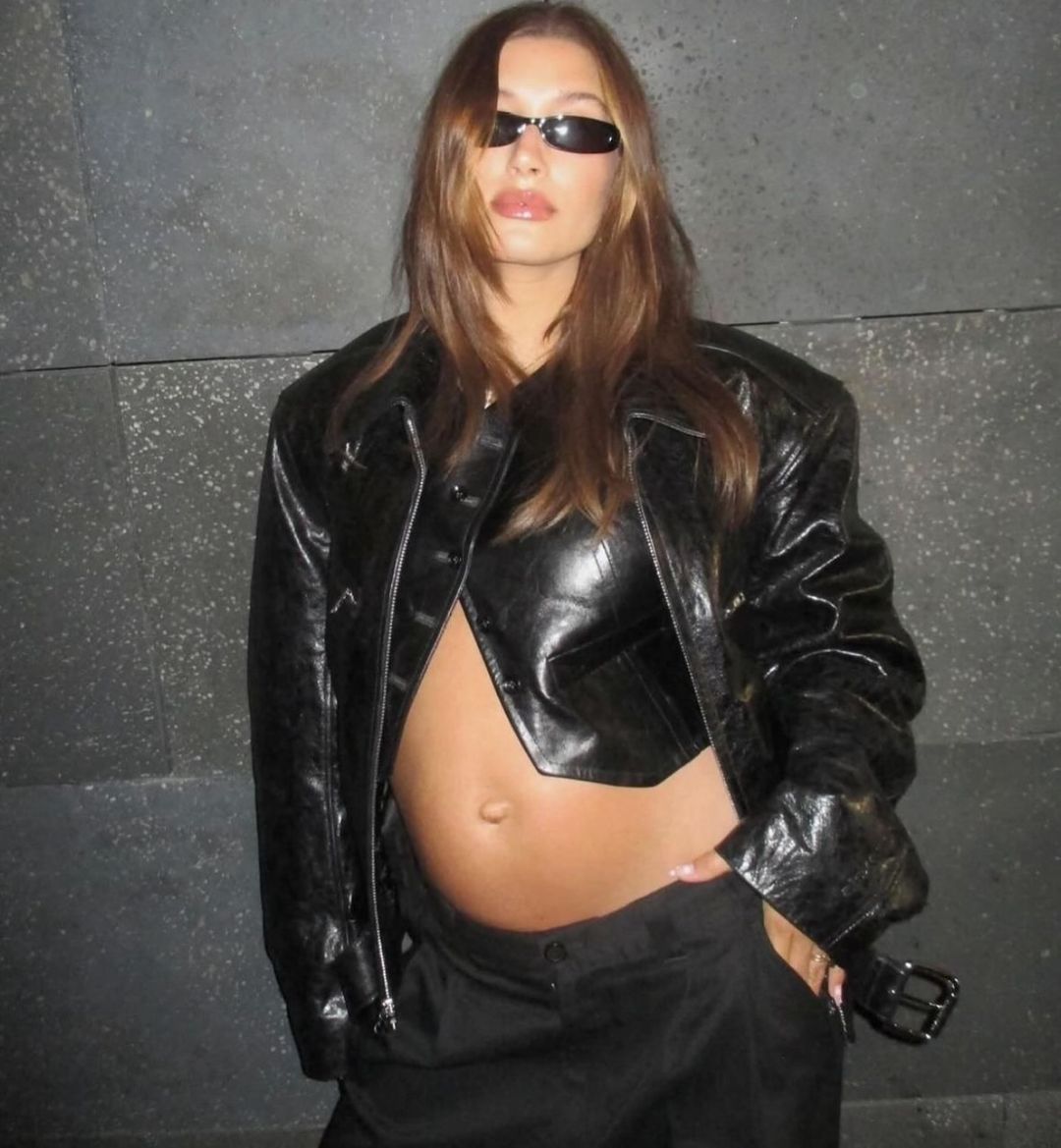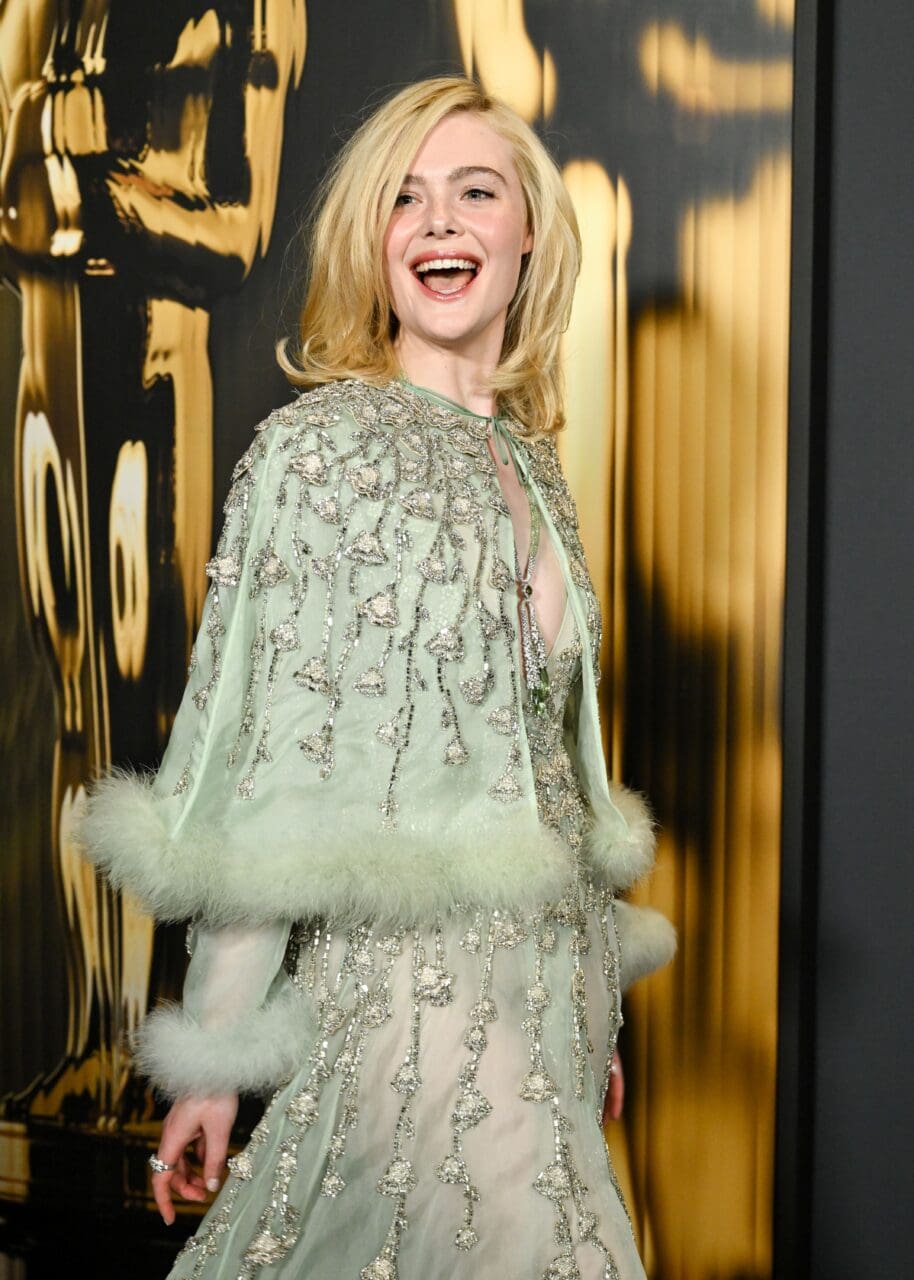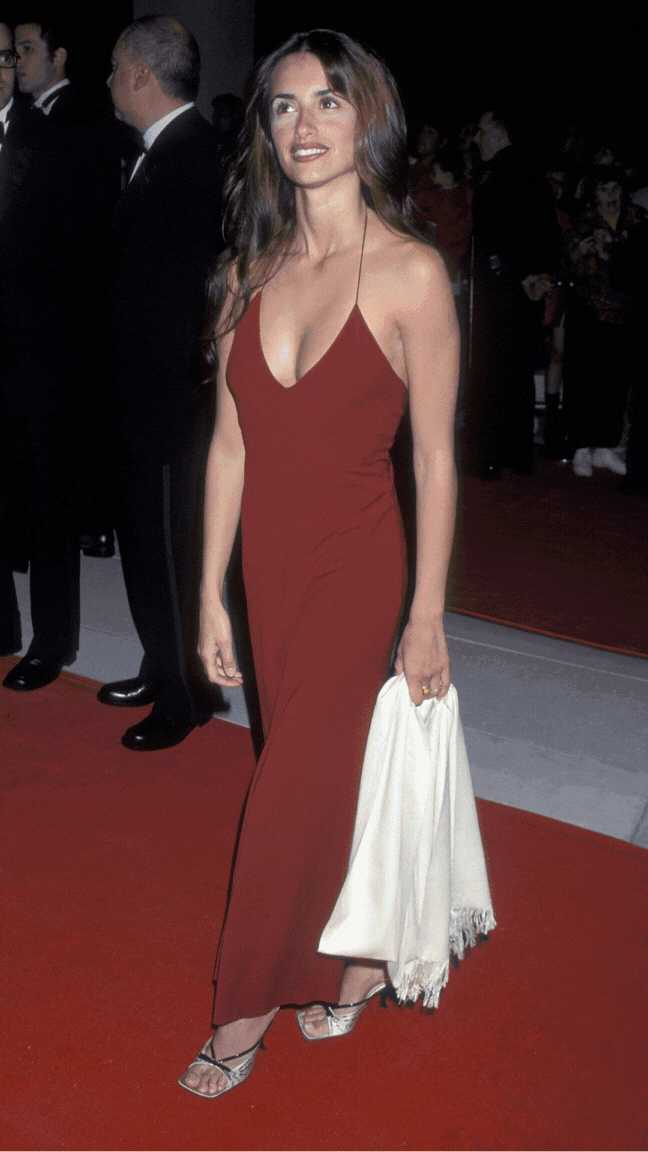Born a second-tier member of the royal family on 21 April 1926, Elizabeth Alexandra Mary Windsor became the heir presumptive to the British throne following the abdication of King Edward VIII in 1936, followed by the coronation of her father, King George VI, in 1937. She only graduated from heir presumptive to heir apparent after it became clear that George would never produce a son. Many years later, she would be instrumental in changing the rights of succession to ensure that the first-born child of any monarch stood next in line to the throne regardless of gender. The legislation, rolled out across the Commonwealth, came into effect in 2015, one of many ways in which she modernised the Crown as an institution during her reign as the longest-serving monarch in British history.
A newborn Princess Elizabeth with her parents, the Duke and Duchess of York.
Photo: Getty Images
The future Queen at the age of three on a stroll in London.
Photo: Getty Images
Elizabeth’s beloved father, whose pronounced stutter and diffident nature almost resulted in his being passed over as monarch, trained her for her role from his coronation onwards – engaging Henry Marten, a provost at Eton College, to tutor her about the intricacies of British history and law from the age of 13. Based at nearby Windsor Castle, the young princess would visit Marten twice a week at his study near the college, where he would test her on the likes of The Law and Custom of the Constitution by William Anson in between tending to his pet raven – which he let fly around among his innumerable piles of books. Virtually all of the 14 Prime Ministers that the Queen subsequently worked with would remark on her in-depth knowledge of constitutional matters.
At home with a beloved corgi as a girl.
Photo: Getty Images
At home with her family, George would have the young Elizabeth sit with him while going through his famous red boxes of state correspondence – boxes that would one day become her responsibility. “I have a feeling that in the end probably that training is the answer to a great many things,” she said ahead of her 40th year on the throne. “You can do a lot if you are properly trained, and I hope I have been.” (Another legacy of her father’s? The Queen’s passion for corgis. He gifted her with her first Pembroke Welsh Corgi, Susan, for her 18th birthday, with Her Majesty keeping 14 generations of Susan’s descendants as pets.) Meanwhile, the Queen Mother, then Queen Elizabeth, encouraged her daughter to read literary classics by everyone from Jane Austen to Anthony Trollope, as well as to keep a nightly diary, just as her great-great-grandmother Queen Victoria did – a practice Elizabeth kept up until her death.
With King George VI and Queen Elizabeth on the day of the former’s coronation.
Photo: Getty Images
The Princess Elizabeth studying with her father at Windsor Castle in 1942.
Photo: Getty Images
It’s also during this period that the future monarch established two of her greatest passions: riding and horse breeding. In a tradition dating back to Elizabeth I, the Queen bred her own horses, with operations at Sandringham among several other of her residences. Her lessons on horseback began at the age of three, and by the time she had turned 12 she had mastered side-saddle in preparation for the annual Trooping of the Colour ceremony, for which she would be required to lead 1,400 soldiers down the Horse Guards Parade in London. Many years later, while taking the parade down the Mall in 1981, a gunman fired a number of shots that turned out to be blanks at Her Majesty, startling her 19-year-old mare Burmese. As guards tackled the would-be assassin, the Queen quietly reached down, patted the skittish horse and finished the ceremony without comment.
Attending to her studies at Windsor Castle in 1944.
Photo: Getty Images
Her experiences of the Second World War, which began a few months after her 13th birthday and lasted through most of her teenage years, further engrained her commitment to national service. The Princesses stayed in Windsor, sleeping in a makeshift bomb shelter underneath the 900-year-old castle whose foundations were laid by William the Conqueror, which remained without heating throughout the conflict, each room lit by a single bulb. Their mother promptly shut down the notion that the girls should be dispatched to Canada for their safety. “The princesses would never leave without me, and I wouldn’t leave without the King, and the King will never leave,” she declared flatly, then set about doing target practice in Buckingham Palace with a revolver gifted to her by Winston Churchill.

A 16-year-old Princess Elizabeth registering with the Ministry of Labour while wearing her Guides uniform.
Photo: Getty Images

Her Majesty changing a tyre with the Auxiliary Territorial Service during the war.
Photo: Getty Images
If her father gifted the Queen with her dedication, the Queen Mother is largely to thank for her self-possession. When the intruder Michael Fagan broke into Buckingham Palace in 1982 and made his way into the Queen’s bedroom, she calmly spoke with him about his troubles until the police arrived; 40 years earlier, a person suffering from mental illness had stolen into the Queen Mother’s room at Windsor Castle, hidden behind the curtains in her bedroom and grabbed her ankles. Rather than screaming, she looked down at him and said flatly, “Tell me about it,” before raising the alarm. In a similar vein, after half a dozen German bombs hit Buckingham Palace in 1940, the Queen Mother’s response spoke volumes. “I am almost glad we have been bombed. Now I feel I can look the East End in the face.”

Princess Elizabeth inspecting a training battalion of the Grenadier Guards, of which she was appointed Colonel at the age of 15.
Photo: Getty Images
Back in the relative safety of Windsor, Princess Elizabeth gave her first radio speech in 1940 on the BBC’s Children’s Hour programme – offering words of comfort to London’s many child refugees, who were dispatched to live with strangers in rural areas as the threat of the Blitz loomed. “My sister Margaret Rose and I feel so much for you, as we know from experience what it means to be away from those we love most of all.” The future queen also served in the Guides, practicing her wilderness skills in and around Great Windsor Park with East End refugees, and joined the Auxiliary Territorial Service, where she negotiated a three-tonne vehicle through heavy London traffic and learned how to change tyres and spark plugs. She would remain a skilled motorist for the rest of her life, comfortably driving off-piste on her Sandringham and Balmoral estates. In order to boost morale at Windsor, both Elizabeth and Margaret would star in pantomimes each Christmas in the Waterloo Chamber, performing for audiences of 500 servicemen or more.

Queen Elizabeth, later the Queen Mother, with her daughters during a Christmas pantomime at Windsor Castle; Princess Margaret appeared as Cinderella, while the future monarch played the role of Prince Charming.
Photo: Getty Images
On Victory in Europe Day on 8 May 1945, Elizabeth and Margaret were so overjoyed that the Princesses snuck out into the crowds gathered around Buckingham Palace and stayed out most of the night celebrating – gleefully dancing the conga through the streets in a rare moment of freedom. (The dance step is yet another legacy of her father’s; the King had a habit of ending parties at the Palace by leading conga trains through the state rooms.) The sisters repeated the act the following night, and again on 15 August, when Japan admitted defeat. Elizabeth wrote in her diary of the former outing, “Out in crowd again. Embankment, Piccadilly, Pall Mall, walked simply miles. Saw parents on balcony at 12:30am – ate, partied, bed 3am!” – while she noted she “ran through Ritz” and “drank in Dorchester” on the latter occasion.

Princess Elizabeth and Lieutenant Philip Mountbatten stand for their engagement portraits at Buckingham Palace. In spite of various misgivings about her alliance with Philip within the royal family, their 73-year marriage turned out to be exceedingly happy.
Photo: Getty Images
The war also served to cement the Queen’s attachment to Lieutenant Philip Mountbatten, whom she had met at the age of just 13 on a visit to the Royal Naval Academy in Dartmouth with the royal family. While serving in the navy, Philip wrote frequently to Elizabeth, visiting her at Windsor Castle during his leave. During one notable Christmas period, Queen Mary, Elizabeth’s grandmother, became aware of the young couple’s attachment after spotting Philip watching Elizabeth lovingly during a performance of Aladdin. In spite of disapproval from various camps about the match, Philip proposed to Elizabeth during a visit to Balmoral in the summer of 1946, which she accepted at once without even consulting the King. The pair would formally share the news of their impending nuptials on 9 July 1947, shortly after Elizabeth’s 21st birthday, which she celebrated in South Africa with her mother, father and sister.

In one of her most referenced speeches, the 21-year-old Elizabeth told the Commonwealth, “I declare before you all that my whole life, whether it be long or short, shall be devoted to your service.”
Photo: Getty Images
For the latter occasion – on her first international tour – Elizabeth gave a speech broadcast by the BBC around the world. “If we all go forward together with an unwavering faith, a high courage and a quiet heart, we shall be able to make of this ancient Commonwealth… an even grander thing – more free, more prosperous, more happy and a more powerful influence for good in the world,” she told hundreds of millions of listeners. “It is very simple. I declare before you all that my whole life, whether it be long or short, shall be devoted to your service.” During her first tour after her coronation, Elizabeth used her Christmas speech to reaffirm that the Commonwealth “bears no resemblance to the Empires of the past”, but is instead built on a foundation of “friendship, loyalty and the desire for freedom and peace” through an “equal partnership of nations and races”.
The future queen at work in her Buckingham Palace study in 1946.
Photo: Getty Images
On 20 November 1947, Princess Elizabeth married the newly appointed Duke of Edinburgh at Westminster Abbey in an ivory Norman Hartnell dress encrusted with pearls and crystals, with Queen Mary’s tiara securing her veil. More than 100,000 people crowded the streets around Buckingham Palace to see the newly married couple after the service. In light of ongoing post-war restrictions, only 150 guests attended the wedding reception, dining on “Filet de Sole Mountbatten” and “Bombe Glacée Princess Elizabeth”. After being showered with rose petals in the Palace’s forecourt, the newlyweds departed for the Broadlands estate in Hampshire followed by Balmoral for their honeymoon – with the princess’s beloved Susan in tow. Her instincts about Philip would turn out to be well-placed: he would go on to become the longest-serving consort in British history.

Arriving at Westminster Cathedral with her father, King George, on the morning of her wedding. Tens of thousands of people waited overnight in the freezing cold to catch a glimpse of the bride on the way to the altar.
Photo: Getty Images
Almost exactly a year on from her wedding, Elizabeth gave birth to a son on 14 November 1948: Prince Charles Philip Arthur George. The baby would be followed by Princess Anne Elizabeth Alice Louise in 1950; Prince Andrew Albert Christian Edward in 1960; and Prince Edward Antony Richard Louis in 1964. Shortly after the former’s birth, Philip resumed active service in the navy with a posting in Malta, with Elizabeth joining him in Valletta for set periods, where she enjoyed more freedom than she had ever had before while living as a “sailor’s wife” – including handling cash for the first time. The young family’s years of relative peace were cut short in the early ’50s by her father’s declining health, however, with Elizabeth having to step in for George at a number of royal engagements.
The newlyweds on honeymoon on the Broadlands estate.
Photo: Getty Images
On 6 February 1952, while in Kenya on the first leg of a six-month Commonwealth tour, Elizabeth received a wire that her father had died in the night, making her Queen under the 1701 Act of Settlement. In a remote cabin nestled amongst the branches of a giant fig tree, the 25-year-old princess became the 40th English monarch since 1066. She immediately returned to London, going the next day to address the Accession Council in St James’s Palace. “By the sudden death of my dear father I am called to assume the duties and responsibilities of sovereignty,” she told the assembled crowd. “My heart is too full for me to say more to you today than I shall always work, as my father did throughout his reign, to advance the happiness and prosperity of my peoples, spread as they are the world over… I pray that God will help me to discharge worthily this heavy task that has been laid upon me so early in my life.”

Her Majesty with Princess Anne and Prince Charles during a summer holiday in Balmoral.
Photo: Getty Images
After a period of national mourning, preparation for Elizabeth’s coronation on 2 June 1953 began, which she agreed to televise in a historic first. Winston Churchill, then prime minister, declared that the ceremony would usher in another Elizabethan age – providing the British public with a much-needed boost given ongoing rationing and deprivation. The Queen trained for months for the three-hour ceremony in Westminster Abbey, with a million people streaming into London ahead of the day. One of her more arduous tasks: physically bracing herself to wear the five-pound St Edward’s Crown, along with 40 additional pounds of vestments and sceptres. In addition to wearing the crown while doing her paperwork at night, she strode through the ballroom at Buckingham Palace draped in sheets lined with heavy weights in preparation. After the ceremony, while relaxing in the Green Drawing Room at Buckingham Palace, the Queen gave her jubilant verdict on the ceremony. “Oh, that was marvellous. Nothing went wrong!”

The collective weight of the Queen’s crown, robe and sceptre totalled more than 45 pounds during her coronation.
Photo: Getty Images
From then onwards, the Queen’s years followed a predictable schedule through much of her reign, one defined by ancient traditions. Christmas and the beginning of the year were spent on the Sandringham estate in Norfolk, where she gave shooting parties and tended to the Royal Stud. She then returned to Buckingham Palace ahead of the State Opening of Parliament on 11 May, decamping to Windsor Castle at the weekends as well as for the Royal Maundy, the Most Noble Order of the Garter in June, and Royal Ascot. In high summer, she removed to the Palace of Holyroodhouse in Edinburgh, before going on to Balmoral Castle in Aberdeenshire until October, when she returned to Buckingham Palace once more ahead of the Service of Remembrance.
The Queen alighting from Britannia, the royal yacht, decommissioned in 1997.
Photo: Getty Images
Boarding the royal plane during her Silver Jubilee tour.
Photo: Getty Images
Regardless of her geographical location, she maintained her rigorous schedule of appointments – and tended to her red boxes seven days a week, even having them delivered to Britannia, the royal yacht, via helicopter. “If I missed one once, I would never get it straight again,” she once told a friend.

Meeting Nelson Mandela in 1995, which the Queen later described as “one of the outstanding experiences of my life”.
Photo: Getty Images
As involved as the Queen proved to be in British life, she felt similarly attached to the Commonwealth nations, which would grow from eight countries to 54 over the course of her reign – encompassing roughly a third of the world’s population. (Her private secretaries have estimated that half of her days are spent on Commonwealth matters, in her position as Head of the Commonwealth.) Within a few months of her coronation, the Queen became the first British monarch to circumnavigate the globe while visiting the Commonwealth nations. “The transformation of the Crown from an emblem of dominion into a symbol of free and voluntary association… has no precedent,” she reflected during her Silver Jubilee year. Over the course of her 70 years on the throne, she became the most widely travelled head of state in the world.
Greeting the Eisenhowers at the White House in 1957.
Photo: Getty Images
Beyond the Commonwealth, she maintained her neutrality in matters of global politics while playing an important diplomatic role on behalf of the United Kingdom – particularly when it came to Britain’s special relationship with America. When the Suez Crisis soured President Eisenhower’s feelings towards Britain, Downing Street dispatched the Queen and the Duke of Edinburgh to Washington DC, where the royal couple met American footballers at the Byrd Stadium in Baltimore and requested to visit a supermarket – a phenomenon that had yet to make its way to the UK. “How nice that you can bring your children along,” Her Majesty noted while surveying a cart, before thanking the general manager for the “tour”. Several decades later, the Queen would form an equally strong bond with the Reagans over their mutual love of horses, taking the president for a ride around Windsor Great Park and visiting him at his ranch in California, where she was met with torrential downpours.

“I knew before we came that we had exported many of our traditions to the United States,” the Queen deadpanned during one rainy visit to America under President Reagan, “but I had not realised that weather was one of them.”
Photo: Getty Images
And while the Queen remained a bastion of tradition throughout her reign, she also oversaw considerable shifts within the monarchy – from opening Buckingham Palace to the public for the first time to welcoming television cameras into the royal sphere for documentaries, such as Royal Family (1969) and Elizabeth R (1992). Her approach to her calling is perhaps best described by her first televised Christmas speech in 1957, written privately with the help of Philip. “Twenty-five years ago my grandfather broadcast the first of these Christmas messages,” she began. “Today is another landmark because television has made it possible for many of you to see me in your homes on Christmas Day. It is inevitable that I should seem a rather remote figure to many of you. A successor to the kings and queens of history; someone whose face may be familiar in newspapers and films but who never really touches your personal lives. But now at least for a few minutes I welcome you to the peace of my own home.
Her Majesty on the occasion of her first televised Christmas broadcast in 1957.
Photo: Getty Images
“That it is possible for some of you to see me today is just another example of the speed at which things are changing all around us,” she continued. “Because of these changes I am not surprised that many people feel lost and unable to decide what to hold on to and what to discard. How to take advantage of the new life without losing the best of the old… Today we need a special kind of courage, not the kind needed in battle but a kind which makes us stand up for everything that we know is right, everything that is true and honest. We need the kind of courage that can withstand the subtle corruption of the cynics so that we can show the world that we are not afraid of the future… I cannot lead you into battle, I do not give you laws or administer justice but I can do something else, I can give you my heart and my devotion to these old islands and to all the peoples of our brotherhood of nations.”
Editor
Hayley MaitlandCredit
Lead Image: Getty Images

















